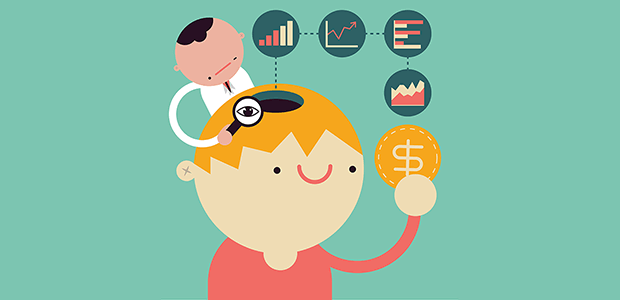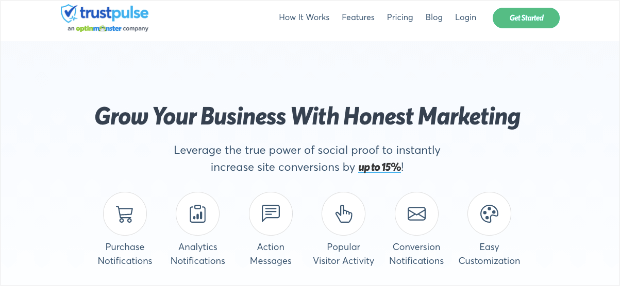Do you want to apply marketing psychology to grow your business?
Marketing psychology is a way to apply principles of human behavior to your marketing strategies. When your marketing tactics align with the way people think, your conversion rates tend to improve.
In this article, we’ll go over some easy marketing psychology tactics, examples, and principles that you can use today.
Let’s get started!
What is Marketing Psychology?
Marketing psychology is the practice of matching your marketing content and strategies with known human thought and behavioral patterns. In other words, you try to align your marketing with what your customers are naturally inclined to do.
The idea is not to try and change consumer psychology. Those thought processes are deeply ingrained and have evolved over millions of years, so you’re not going to change them with one clever ad campaign. Instead, your goal is to match your marketing to existing psychological patterns.
How Does Marketing Psychology Work in Online Marketing
The goal of psychological marketing is to anticipate, and influence, consumer behavior by understanding cognitive biases. Cognitive bias is when someone misinterprets information from the world around them. Marketers can use these thinking errors to persuade customers to act.
Even though most of us won’t admit it, our decision-making isn’t usually based on logic. Instead, we buy based on our emotions. Some examples:
- You see a notification saying there are only 3 products left in stock. You feel fear of missing out, so we hurry to buy that product.
- An influencer wears an item of clothing. Many of their 3 million followers feel the desire to belong to the popular, good-looking group, and rush to get the same item.
- Free shipping makes customers feel happy, so they spend more than they otherwise would have to get free shipping on their order.
Of course, you want to be responsible in your marketing. While your goal is to grow your business and earn more revenue, your marketing must genuinely serve your target audience, not take advantage of them.
Let’s look at some real-life examples of psychological theories in marketing.
Principles of Marketing Psychology (With Examples!)
1. Social Proof
Social proof is based on people’s tendency to imitate the actions of a group of people they like or trust.
Think about it: are you more likely to buy something that has thousands of positive reviews or just a few? Even if the product with fewer reviews has a higher overall rating, most people will favor the product with more reviews. The product seems more trustworthy because more people have purchased it, even if not all of them loved it.
Some ways to use social proof include:
- Reviews and ratings
- Testimonials
- Case studies
- Like and follower counts
- Sales activity feeds
It’s easy to display real-time sales notifications on product pages and throughout your website with TrustPulse.
TrustPulse is the best social proof app for showing off how popular your product or service is.
With just a few clicks, you can add a live activity feed to your site. The notifications are a subtle but powerful way to show potential customers that others like them are buying and using your product.
Example 1:
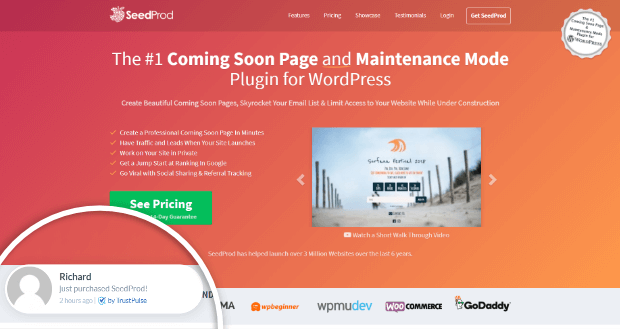
Resources:
2. Liking
Liking is as simple as it sounds: we are more easily persuaded by people who we like and who are like us.
This is the foundation of influencer marketing. Even though you don’t actually know the influencer personally, you may feel like you do because you have something in common with them. You may just want to have their lifestyle, which is often enough to convince you to buy whatever they’re promoting.
Example 2:
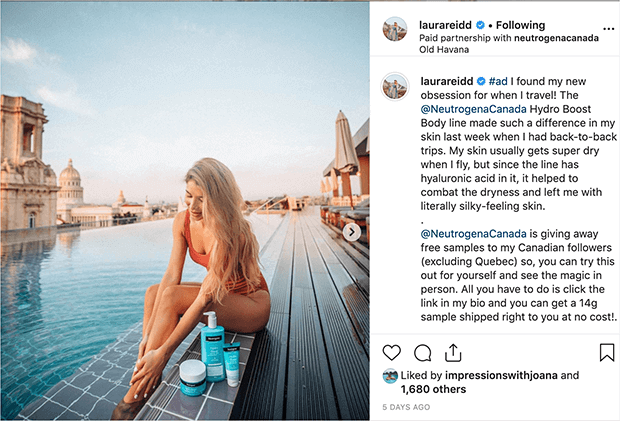
Even if you’re not an influencer, you can use the liking principle to appeal to your customers. Create an engaging “About” page to put a human face on your business. Use real photographs of your team to connect authentically with customers. Be honest and real in your content marketing so that prospects can relate to you.
Example 3:
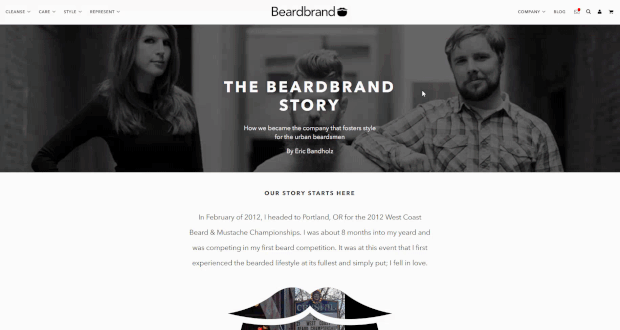
Resources:
3. Urgency
Urgency is a form of scarcity, which is the belief that the more rare or hard to find a product is, the more valuable it becomes.
When there’s a limited number of products to purchase, customers start to feel fear of missing out (FOMO). That builds a sense of urgency to buy now before they lose their chance.
Some simple ways to build FOMO include:
- Countdown timers for sales or promotions
- Low stock notifications
- Flash sales
Example 4:
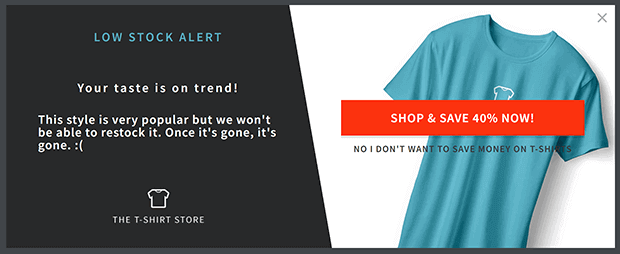
Resources:
- FOMO Marketing Tips to Start Using Today
- How to Add a Low Stock Notification to WooCommerce
- How to Create a Flash Sale Notification to Boost Profits
4. Loss Aversion
People are often more afraid of losing what they already have than not getting something new. This is called loss aversion and it’s another version of FOMO.
You can use loss aversion in marketing by giving customers something useful that they will pay to keep. This is how the freemium model of SaaS licensing works. First-time customers get a fully-featured free trial to use and learn with. When the trial is over, they’ll be motivated to not lose what they’ve already created during the trial.
Example 5:

Another way to use loss aversion is to frame your messaging in terms of preventing loss, rather than promising gain. So instead of saying, “Get this now!” you might say, “Don’t miss out!”
Example 6:
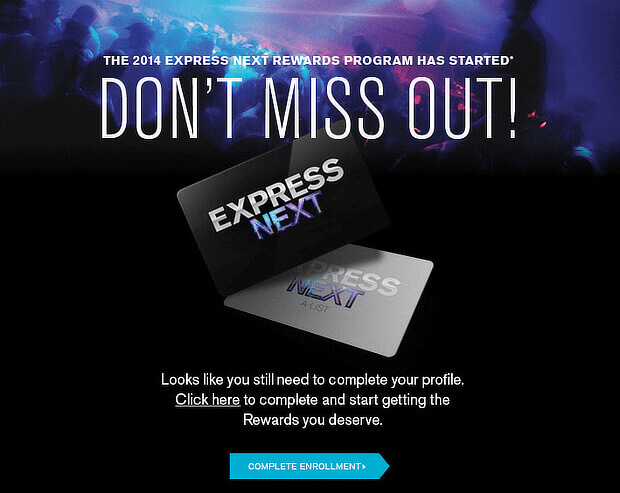
Be careful to use loss aversion tactics in moderation, and always keep your promises. If you’re constantly saying, “Get these limited time offers!” customers will start to realize that the sales or products are not actually limited. They’ll either wait for the next, bigger sale, or they’ll feel manipulated and leave your brand behind.
5. Exclusivity
Another version of scarcity is exclusivity. Exclusivity is limiting access to a product or deal.
We tend to value what we can’t have. So when special promotions are exclusively for email subscribers or loyalty program members, we want to join those groups to get access.
Exclusivity is an easy lead magnet for building your email list. By offering certain coupons and sale notifications only through email marketing, you motivate customers to join your mailing list.
Example 7:
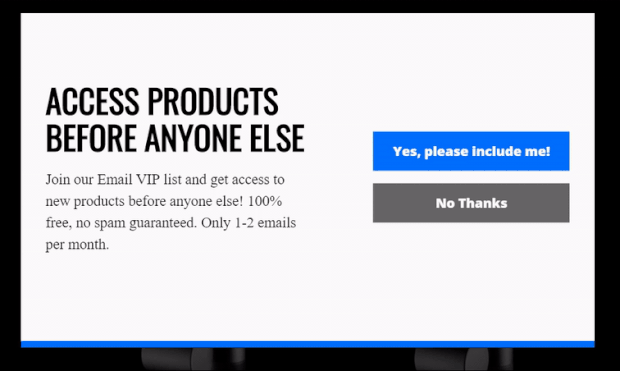
Another way to use exclusivity is to use gated content. You can use a tool like OptinMonster to put your best content behind a subscription form. Or go further by setting up a paid membership with a plugin like MemberPress.
Example 8:
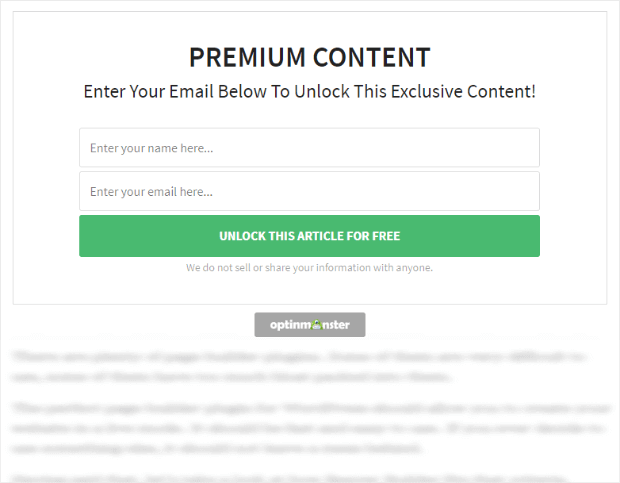
Resources:
- How to Create a Membership Site in WordPress
- How to Use Gated Content to Skyrocket Engagement & Conversions
6. Anchoring
Anchoring is when a customer uses the first piece of information they see as a reference point or anchor when making a purchasing decision. One of the most common uses of anchoring is with pricing.
If a customer sees that an item is priced at $100, they have no way of knowing if that’s a bargain or a rip-off. But if they see that an item is marked down from $1,000 to $100, they’ll assume that they’re getting something valuable for much less money.
Example 9:
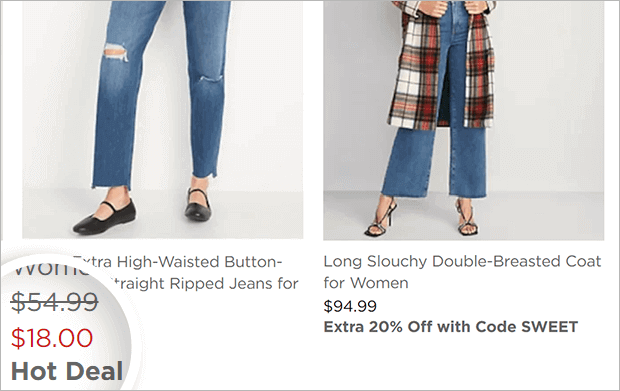
Similarly, you can show customers how much they’ll save by purchasing a bundle or annual subscription. The original price of the individual items or a monthly payment serves as an anchor for the higher, but presumably more valuable price.
Example 10:
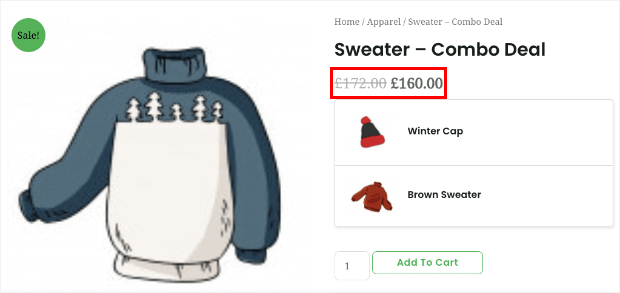
7. Decoy Effect
The decoy effect is a specific type of anchoring that uses a seemingly negative anchor to make the other offers look better by comparison.
You might have 3 service packages that look like this:
- Bronze: 6 hours for $1,000
- Silver: 8 hours for $2,500
- Gold: 8 hours + bonus for $2,500
Any customer seeing these offers would probably think it was silly to get the silver package if they can pay the same price for the gold package that comes with a bonus. Odds are, very few people would ever choose the silver package. But without the silver package as a decoy, the gold package just looks more than twice as expensive as the bronze package.
Example 11:
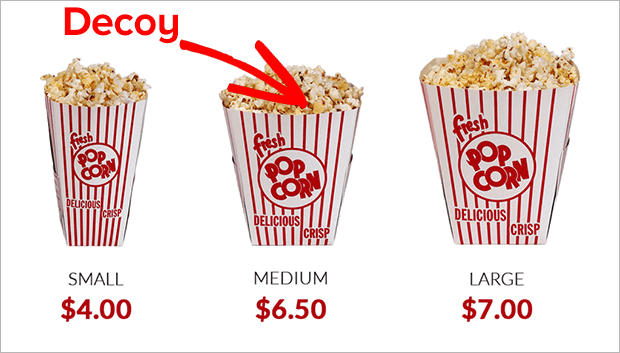
8. Commitment & Consistency Bias
The commitment and consistency bias is the tendency toward actions that are consistent with previous actions. A reader scrolling through a blog post is likely to keep scrolling. Someone who starts an order is more likely to finish it than someone who’s just browsing.
To use the commitment and consistency bias in your marketing campaigns, ask customers to say yes to something easy first. Once they agree to that, ask for something else, and then continue through the sales funnel until you ask for the purchase.
One way to do this is with OptinMonster’s 2-step optins. Rather than immediately asking for an email address, you ask a simple question that nearly everyone will answer yes to. Once they click through the first yes, they’re more likely to continue through the email subscription process.
Example 12:
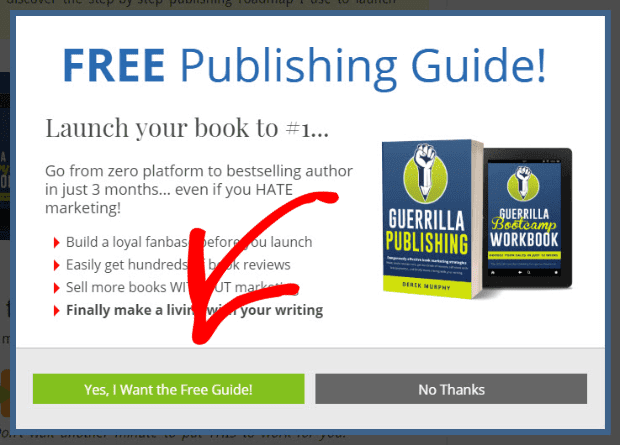
Resources:
9. Primacy & Recency
Primacy and recency refers to the way people tend to remember the beginning and end of something more than what’s in the middle. You can use this tendency to highlight the information or offer you most want to prioritize.
For example, you might list the most popular features first so that customers remember them better.
Or you start and end a sales landing page with call to action (CTA) buttons. Many customers skim through web pages quickly before deciding whether to read more carefully. Place the most important information like CTAs, benefits, and pricing at the beginning and end where they can be easily found.
Example 13:

10. Reciprocity
Reciprocity is when customers feel inclined to do something for you when you’ve done something for them. This comes in handy when you’re ready to ask for something, whether that’s an email signup or a sale.
Lead magnets are a perfect example of reciprocity. You offer something valuable for free in exchange for the chance to continue sending marketing materials through email.
Example 14:
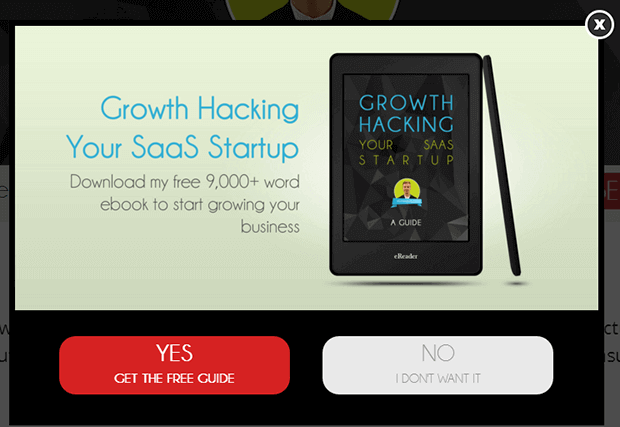
Customer experience is another easy and low-cost way to use reciprocity in your marketing. A thoughtful hand-written note or patient, thorough answer to a pre-sale or support question can go a long way in making customers feel cared for. When they feel cared for, they’ll be more likely to say yes when you ask for a purchase, review, or referral.
Example 15:
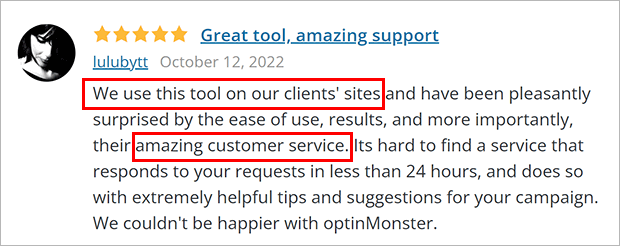
Remember, always deliver value before you ask.
Resources:
- Time-Tested Lead Magnet Ideas & Examples to Use
- 7 Killer Sales Follow-up Emails to Boost Customer Loyalty
11. Color Psychology
Color psychology is the study of how color affects perception and behavior. Strategic use of color psychology marketing can increase your conversion rates.
There’s lots of articles about what certain colors mean, but the reality is more complicated. Every customer brings their own experiences and preferences to your brand, so there’s no way to say that a specific color will make everyone feel a certain way.
Instead, choose colors that are:
- appropriate for your brand
- convey your brand personality
- appeals to your target audience
- helps you stand out from competitors
The best way to determine these colors is through testing and customer research during the brand development process. Once you have brand colors, you can still split test colors for buttons, headlines, and other elements on your website.
Example 16:
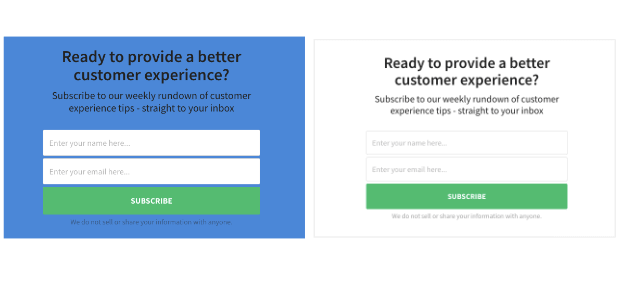
Resources:
We hope you found these marketing psychology tips helpful.
For more insight into marketing psychology, check out these FOMO popup examples for inspiration.
To add social proof and urgency reminders to your website, get started with TrustPulse today!
If you like this article, please follow us on Facebook and Twitter for more free articles.
